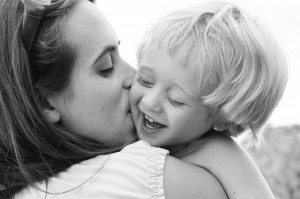 As an API Leader, I frequently give parents guidance on ways to respond to their children in different situations. But the truth is, I don’t always follow my own advice. As all parents know, it’s one thing to be removed from a situation and think about solutions rationally; it’s quite another to deal with a public tantrum or a kid who won’t go to bed when you are exhausted and frustrated. That’s why it’s important to have tools at your disposal to cope with these situations before they arise.
As an API Leader, I frequently give parents guidance on ways to respond to their children in different situations. But the truth is, I don’t always follow my own advice. As all parents know, it’s one thing to be removed from a situation and think about solutions rationally; it’s quite another to deal with a public tantrum or a kid who won’t go to bed when you are exhausted and frustrated. That’s why it’s important to have tools at your disposal to cope with these situations before they arise.
First, it’s helpful to become aware of how often you respond in a way you’d rather not and what triggers those responses. Some parents use stacking rings or bangles on one side of the body, and move one to the other side each time they respond to their children in a way they’d rather not. A jewelry-free option would be gently snapping a rubber band on your wrist. This helps you become more conscious of how you respond to your children, and any patterns that provoke a certain response.
As for preventing an unwanted response, here are a few ideas:
- Do some kind of physical activity, such as running around the house, jumping up and down or dancing. Exercise helps the brain process stress that might otherwise be directed toward your children. It’s also pretty funny for little kids to see Mom or Dad suddenly jumping up and down, which can diffuse a stressful situation.
- Sing what you would like to say to your child. Singing prevents you from yelling and tends to gets kids’ attention more easily than talking, because it’s out of the ordinary. It also forces you to control your breath, which will help to calm you down.
- Have a mantra that calms you down. You can put it on sticky notes around the house, write it on your arm or just repeat it to yourself. Bonus points, if it also makes you laugh. My personal favorite is yelling, “Serenity now!” (Try not to feel better after that. It’s impossible.)
- Leave the room. I’ve had parents express concern about this, because it seems similar to a timeout. The difference is, a timeout is a controlled response by the parent to the child. Leaving the room is helpful when you know you can’t control your response, and it will be less damaging to your connection with your child than what you might otherwise say or do. Take deep breaths, scream into a pillow, whatever you need to do to calm down. When you come back — or before you go, if you’re able — you can explain to your child what happened: For example, “I was feeling frustrated, and I needed to take a break to calm down.” This can be a great opportunity to open a dialog with your child about negative feelings and healthy ways to deal with them.
Even with these tricks, don’t expect to be a perfect parent all the time. We all make mistakes. Just be sure to take time to reconnect with your child when you do. Try to keep your stress levels low by taking time for yourself, and do the best you can.








